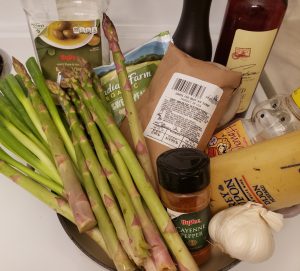As promised, I am back this week with a chorizo gravy recipe.
I feel a little bad that I made everyone wait a week and worse that I imagine most readers would rather substitute in store-bought biscuits than just forego this great chorizo gravy recipe.

Well, I am here to tell you that good things are worth the wait, and this is no exception.
It was a true delight.
I don’t even think all the other additions (cotija, avocado, scallions, and cilantro) are strictly necessary, even though of course I added them and would definitely do them again. That being said, as much as I love cotija, I feel like it does add the least in the addition, just because the gravy is already so fatty and so flavorful that the crumbly Mexican cheese doesn’t add as much as I would have thought. Also, for my personal tastes, I could take or leave the scallions. But when I make it again, it will definitely still have avocados and cilantro, and frankly, probably the others too.
Here is where I do admit that I did semi-cheat by not using my Le Creuset on the gravy. I thought since the biscuits called for an 8-inch skillet (maybe a typo, see last week) that it’d be safer to use the 9-inch for the biscuits and not overwhelm it with gravy that could overtop, so I went with our 10-inch cast iron for the gravy.
Technically, I think 9-inch would still work, particularly as you brown the chorizo and then remove it to make the gravy, and only are supposed to add back in half the chorizo, with the rest on top separately. I went ahead and added all the chorizo back in and it fit comfortably in the 10-inch. Alternatively, when the gravy is done, it could be poured into the sitting chorizo instead and you could keep using a 9-inch without problem.
What I’m saying is this one is pretty adaptable. Cook your gravy how you like, and add what you like, or nothing, to the top, and all is good, man. Just enjoy.

Here’s what I did, finishing out the Bon Appetit recipe without many changes:
Ingredients
- 1 T. vegetable oil
- 1 lb. fresh chorizo, casings removed (or just buy Beeler’s that already is removed from casings, like I did)
- 3 c. all-purpose flour
- 2 ½ c. whole milk (I accidentally did not specify when my sweetie went shopping so we used 2% and it was fine)
- Salt and pepper, to taste
- Hot sauce, to taste
- 3 T. butter, if needed (my chorizo was not very fatty, so to make a roux, I needed more fat, you may too)
- 2 avocados, for serving (optional)
- 4 scallions, sliced, for serving (optional)
- ½ c. cilantro, chopped, for serving (optional)
- ½ c. cotija cheese or queso fresco, for serving (optional)
Directions
Heat oil in a 9- to 10-inch skillet over medium heat. Add chorizo, breaking up any large pieces, and cook, stirring occasionally, until the chorizo is browned, about 8 to 10 minutes. Transfer to a bowl (small if planning to add back in to gravy, larger if planning on adding gravy to bowl).
Add additional butter if needed so that you have a total of about 3 T of fat to mix with the flour to make a roux. Add the flour once the butter has melted, if using, and whisk constantly until the roux is starting to turn golden brown, about 5 minutes.
Gradually add milk, stirring constantly, until incorporated. Reduce heat to medium-low and continue to cook gravy until thickened, another 5 to 8 minutes.
Stir in half the chorizo, or all of it, or add the gravy to the chorizo mixture, as will fit and as desired. Season with salt, pepper, and hot sauce, to taste.
To serve: Spoon some gravy over biscuits (either cornmeal from last week or store bought), and then top with avocados, scallions, cilantro, and cotija, if using any or all, and the rest of the chorizo if you didn’t mix it in. Add more hot sauce if desired, and enjoy the gluttony!






